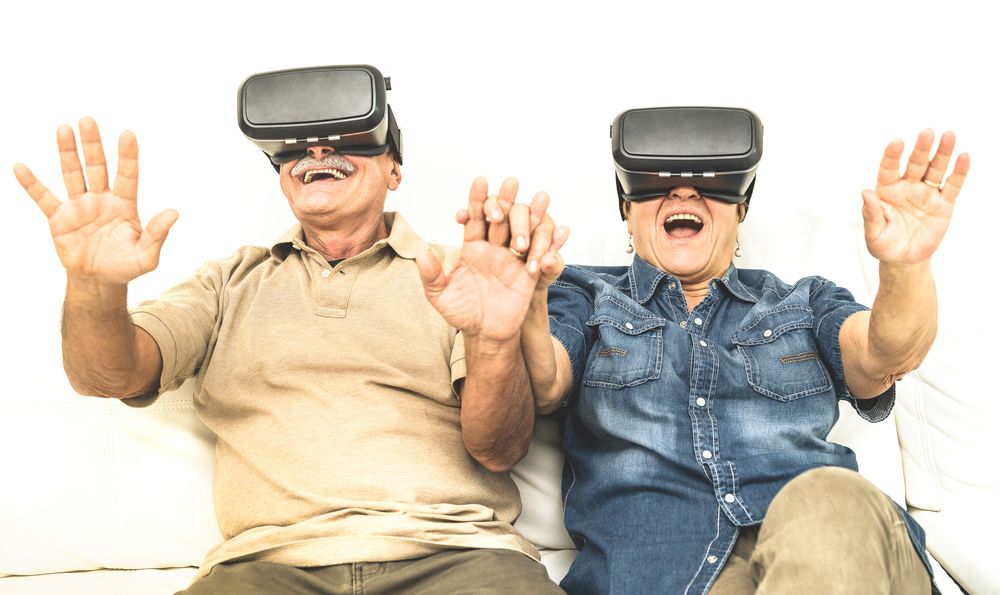Business partners Beau Barnett and Nick Strong are taking Virtual Reality (VR) beyond the realm of immersive gaming into the aged and health care industries and, as with many business ideas, it all stemmed from a personal experience. Collaborating with Intel to ensure they had the right technology to handle the demands of VR resulted in an experience that brightens up the days of many patients.
And when they could be flying over the Alps in a hot air balloon one moment, or exploring the planets of the solar system the next, it’s easy to understand why.
“My grandfather was in a hospice and we got to talking about his time growing up in England in Manchester. I thought it would be great if he could visit one last time, so I set about making this happen,” says Barnett.
Sadly, Beau’s grandfather passed away before he had completed his ambitious VR project, but the work prompted the kernel of an idea. “I thought he would have really liked it and that in turn, other people in the same situation would too.”
Barnett and Strong’s company, Oceanic Studios, is now leading the charge in this brave new world where VR is used as a therapeutic device for residents in aged care facilities.
Both agree the industry has come a long way since their first experiences of virtual reality.
“I first experienced VR in 1994 at a video game arcade in Melbourne,” Barnett recalls. “You couldn’t walk around and it made you feel very sick but you still felt you were somewhere else and it was very powerful.”
Barnett understood it was only a matter of time before technology caught up with his expectations for the platform. Twenty plus years later and you have efficient and powerful processors, the brains of the computer, allowing developers to build realistic interactive environments.
Strong cites Shane Warne’s cricket game, King of Spin VR – a pick-up-and-play batting game that lets you face off against the cricketing legend – as a fantastic example of the advances of VR in the gaming arena.
The number of applications for VR has grown exponentially since those early days of the tech and now the pair is witnessing the healing power of VR first hand. Commissioned by TLC Aged Care to work on a way to bring VR to patients’ lives, the duo came up with an inventive solution.

“We created a purpose-built touch screen kiosk which allows staff and residents to operate it like an iPad with just one touch.”
“We then created and curated different VR experiences from travel, educational and personal experiences via 360 videos with their families and placed these kiosks in purpose-built ‘lifestyle’ rooms with comfy recliners. And based on the feedback from both the facilities’ owners and the residents it’s been a big hit.”
Strong says anecdotal evidence is proving just how effective VR has been, with the facilities now employing the use of VR as a lifestyle and therapeutic tool.
“The residents really enjoy being able to experience the wonders of VR. So much so, that we are constantly asked to both source and create new content. One example is a resident who wanted to visit his village in Italy. Using Google Earth VR, he could walk down the street he grew up in and the memories it reignited moved him to tears.”
“People can experience anything they want to. They can travel to Venice, Egypt, see the Sistine Chapel, or wander the Louvre in search of the Mona Lisa. They could even be surrounded by exotic animals or cute and adorable puppies and kittens. We wanted to provide a wide range of scenarios that people in aged care have either never had the chance to see, or give them a choice of revisiting experiences from the past.”
Of course, none of this would have been possible without recent advances in technology. Efficient and powerful processors are now allowing developers to build realistic interactive environments.
“Due to the increasing power of computers running on Intel’s superior range of processors, you can now deliver realistic environments and allow natural interactions within a VR world that rival what you can experience in the real world,” says Strong.
“One of the biggest problems that faced VR in its start-up phase was issues with latency. If you don’t have low enough latency, it’s impossible to deliver good experiences: by which I mean virtual objects that your eyes and brain accept as real. With the power that Intel brings to the CPU of computers, headsets like the Oculus Rift can achieve a latency of around 30 or 40 milliseconds. We may be waiting for our hoverboards still but VR is here and it’s here to stay.”
Strong says one of the benefits of working directly with a partner such as Intel is that they can leverage their know-how to keep pushing the envelope on what is achievable in VR.
“This helps bring about more realistic outcomes for people suffering from a myriad of health problems and also to train the next wave of health practitioners. An example of this can simply be by having our kiosks within the aged care facilities having state-of-the-art Intel processors to allow us to create high-end experiences for the residents that are not let down by latency issues with the hardware,” he adds.
Strong believes the use of VR in the aged care sector is just the tip of the iceberg. He believes VR can deliver a wide range of therapeutic treatment benefits.
“From treating PTSD for returning soldiers, pain management, treating phobias, stroke rehabilitation and to even viewing your unborn child in 3D within VR”.
It seems the applications and the range of possible experiences delivered by VR are limitless.
For more on how to super charge your business, check out the Intel tech hub










































Trending
Weekly business news and insights, delivered to your inbox.